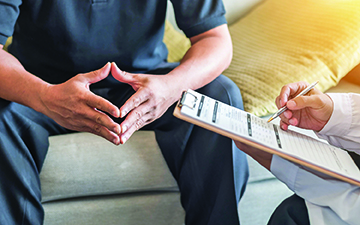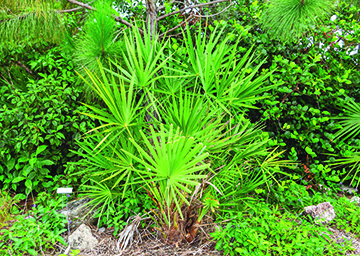The cruel hand of time spares no one and is well known for putting the squeeze on the nether regions of older men. Benign Prostatic Hyperplasia (BPH) — aka an enlarged prostate — is a fact of life for many but does not have to be the case for all.
Symptoms include an abnormally frequent need to urinate, especially at night, as well as difficulty beginning the urination process, along with a weak stream and inability to fully empty the bladder. The prostate surrounds the urethra, and as it enlarges it applies increasing pressure which can hinder urinary flow and control.
Modern medicine is vague when citing causes for BPH, but according to mountsi nai.org, “The actual cause of prostate enlargement is unknown. Factors linked to aging and changes in the cells of the testicles may have a role in the growth of the gland, as well as testosterone levels.”
Western institutional medicine is quick to champion pills and surgery as the premier solutions to BPH. Yet, for those who distrust big pharma and scalpel-happy surgeons, there are a variety of ways to reduce an enlarged prostate and to possibly avoid the condition entirely.
Saw Palmetto Extract
The NIH (National Institutes of Health) recently studied the effects of two different preparations of this plant on BPH. The separate tests showed results which were more effective than a placebo. This isn’t entirely convincing, yet American Family Physician (aafp.org) reports, “Studies have demonstrated the effectiveness of saw palmetto in reducing symptoms associated with benign prostatic hyperplasia. Saw palmetto appears to have efficacy similar to that of medications like finasteride, but it is better tolerated and less expensive. There are no known drug interactions with saw palmetto and reported side effects are minor and rare.”
Stinging Nettle
The Mt. Sinai Health Library reports that stinging nettle has been used for hundreds of years, primarily in Europe, to treat early symptoms of BPH as well as other urinary tract problems. The Stinging Nettle web page reports, “Studies in people suggest that stinging nettle, in combination with other herbs (especially saw palmetto), may be effective at relieving symptoms such as reduced urinary flow, incomplete emptying of the bladder, post urination dripping, and the constant urge to urinate.”
Hydrotherapy
A hot-and-cold immersion practice known as a sitz bath, as reported by Prostate Cancer 911, is a time-tested method for shrinking an enlarged prostate. Men are instructed to prepare two baths side by side. The first bath is heated to 105-155 degrees F and treated with 1/2 cup of Epsom salt while the second is maintained at a chilly 55-85 degrees F and treated with several drops of lavender essential oil. You enjoy the hot bath for three minutes, then endure the cold one for one minute and repeat two more times.
The report also states, “This is a natural way to shrink the prostate and soothe it. Hydrotherapy is commonly used as a method of prostate enlargement treatment, especially for relieving symptoms. A sitz bath increases blood circulation in the pelvic area and eases the constriction of the urethra.”
Exercise
Kegels are simple muscle contractions used by men and women to strengthen musculature in the pelvic region. For men, the practice can help strengthen the prostate and surrounding tissues, and thus increase bladder control. To perform a Kegel, simply squeeze your bladder as though you are attempting to stop the flow of urine mid-stream. Hold for five seconds and repeat 10 to 20 times per day.
Men are encouraged to begin a moderate daily regimen and slowly increase the amount of reps per day rather than overdoing it at the onset — just as with any other type of new exercise. In a report titled Kegel Exercises for Men, UCLA Health states, “Building up the strength in your pelvic floor muscles can help you gain better control of your bladder and urine flow.”
As for comprehensive exercise which engages the entire body, Harvard Health reports, “Based on questionnaires completed by more than 30,000 men in the Health Professionals Follow-up Study, researchers found an inverse relationship between physical activity and BPH symptoms. Simply put, men who were more physically active were less likely to suffer from BPH. Even low- to moderate-intensity physical activity, such as walking regularly at a moderate pace, yielded benefits.”
Testosterone Replacement Therapy (TRT)
According to a May 2019 Endocrine Extracts report published by Bio Scientifica, “Recent evidence shows that low, rather than high T [testosterone] is associated with BPH/lower urinary tract symptoms (LUTS).” The report discusses results of a TRT trial in 120 men awaiting BPH surgery.
The subjects who received daily applications of T gel for six months showed improvement; “TRT arm was characterized by a significant decrease in ultrasound markers of prostate inflammation, including arterial velocity and acceleration.” The study concluded, “Testosterone replacement therapy is able to reduce prostate inflammation in men with BPH, metabolic syndrome, and hypogonadism: preliminary results from a randomized placebo-controlled clinical trial.”
Diet
The Prostate Cancer Foundation (PCF) recommends a diet of cruciferous vegetables (broccoli, kale, cauliflower, etc.), berries, fish, plant-based protein (soy), beans, nuts, green tea, coffee (two cups per day), and cooked tomatoes. The PCF also cautions men over 50 against sugar in any form and processed carbohydrates while opting for moderate consumption of animal-based protein.
Essentially, this is known as the Mediterranean diet. The report also states, “PCF-funded epidemiologist Lorelei Mucci, M.P.H., Sc.D., at Harvard T.H Chan School of Public Health notes that people in Mediterranean countries not only eat more vegetables and fruits… they also eat less fatty foods, processed food, and red meat – categories that can ‘increase insulin resistance, increase inflammation, raise cardiovascular risk, and be a part of a dietary pattern that may increase obesity, as well.’”




